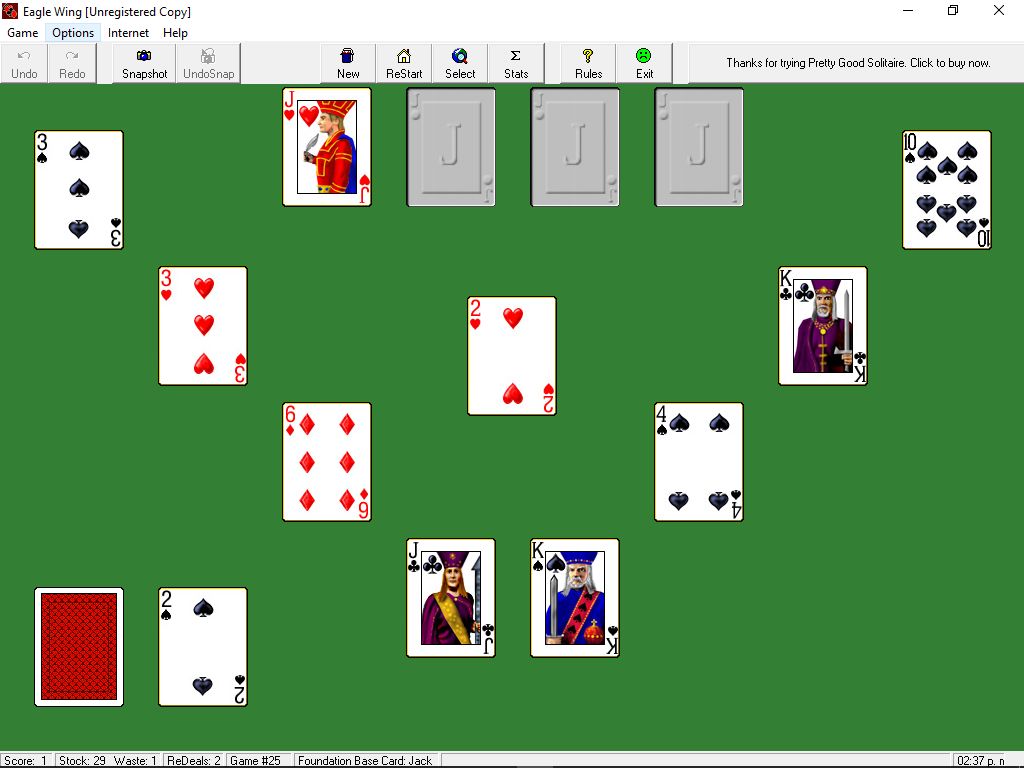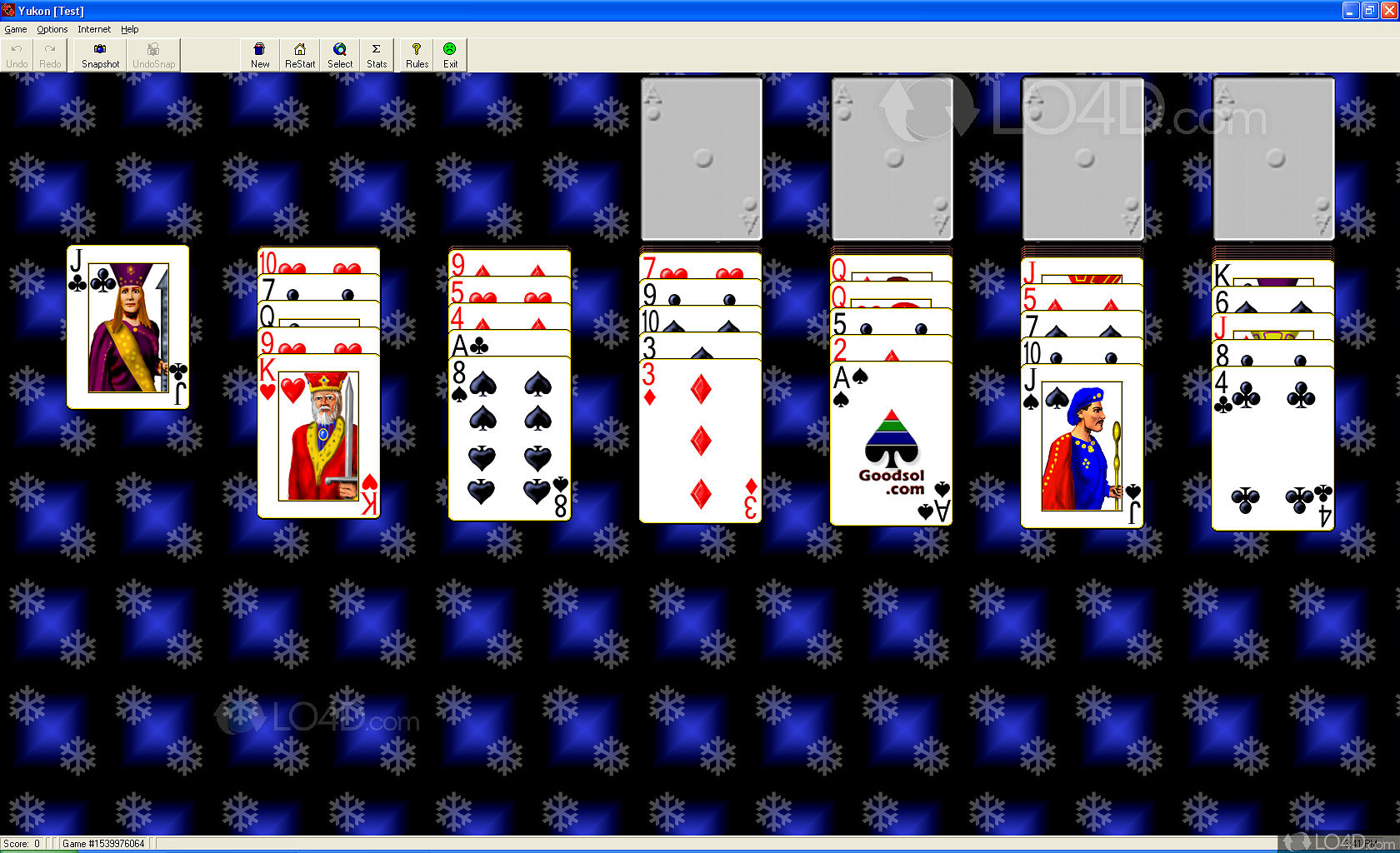

The EMG signals were synchronously digitized by a 16-bit analog-to-digital converter at 20 and 1 kHz over signal periods of 0.205 and 1 s, respectively. After filtering from 1 to 300 Hz, the two bipolar EMG signals were amplified. The exerted force was displayed in front of the subject on a light-emitting diode bar and simultaneously digitized and recorded. The isometric force of the elbow flexion was measured at the wrist.
#Pre activation pretty good solitaire 19.2 skin#
After optimal positioning, the rigid electrode array was fixed at the skin with adhesive tape. The localization of the electrodes was parallel to the fiber direction, nearly halfway between the innervation zone and the distal tendon. A small amount of electrode paste was used. The skin was abraded and cleaned with ethanol. Three silver electrodes (diameter 2 mm) were placed in a rigid bipolar array with a common center electrode the interelectrode distance was 10 mm. The subjects sat in a chair, with their arm fixed in a horizontal, semiflexed position at an angle of 120°, supported at the elbow, with the wrist in the supine position. The results were compared with the CC method, calculated on the same signals. Local spread of MFCVs of different MUAPs can be determined by calculating multiple MFCVs. The EMG is recorded in the biceps brachii muscle by two bipolar electrodes, located parallel to the muscle fibers, at different levels of force. The technique is computational, uncomplicated and based on the estimation of the latencies between defined peaks of the surface EMG. We designed an analysis method that is based on a two-channel EMG, acquired by inexpensive and common instrumentation. However, these techniques require sophisticated and expensive instrumentation and complicated analysis techniques. ( 2) demonstrated localized conduction disturbances of single MUs in myotonia congenita using multichannel surface EMG. Prutchi ( 10) was able to obtain the spread of MFCV by high-resolution, large-array surface EMG system. Rau and co-workers ( 5, 11) developed a high-resolution surface EMG technique and were able to demonstrate the physiology of individual MUAPs with respect to activation patterns. In general, standard surface EMG has a low spatial resolution in detecting potentials on the skin. Hence, detection of the spread of CVs can be helpful in diagnosis. An increase of CVs can be found in pathological conditions like myopathic and neurogenic lesions ( 18, 20). Determining the CVs of individual MUAPs provides information about aspects of neuronal control, such as recruitment and the relation between firing rate and CV ( 8). Invasive MFCV measurements are generally performed in resting muscle: contractions during needle insertion are uncomfortable, and reproducible detection of potentials of the same muscle fiber(s) at different locations is difficult. Despite these advantages, the invasive character is a drawback of these methods. Some invasive MFCV determination techniques have the advantage to estimate the spread of CVs within the muscle. This method reveals a global value of the MFCV but yields no information about the spread of the conduction velocities (CVs). These latencies can be determined by various methods, e.g., the cross-correlation (CC) method ( 9). Surface electromyogram (EMG) determination methods are generally based on the determination of the latency of recognizable parts of the motor unit (MU) action potential (MUAP) during voluntary contraction, recorded at different points along the muscle.

The MFCV can be determined by surface as well as invasive methods ( 1), which differ in a number of ways.

The determination of the muscle fiber conduction velocity (MFCV) is widely used in studies of fatigue ( 17) and neuromuscular diseases ( 20).

In conclusion, the IPL method provides accurate values for the MFCV and additionally gives information about the scatter of conduction velocities. The main finding is that the IPL method can derive a measure of MFCV spread at different contraction levels. The SD is taken as a measure of the MFCV spread. Associated peaks are used to calculate a mean MFCV and the SD. The motor unit action potential peaks are automatically detected with a computer program. sEMG was analyzed in the biceps brachii muscle in 15 young male volunteers. We have developed a new method–the interpeak latency method (IPL)–to calculate both the mean MFCV and the spread of conduction velocities in vivo, from bipolar surface electromyogram (sEMG) during isometric contractions. However, most analysis methods do not yield information about the velocity distribution of the various motor unit action potentials. Muscle fiber conduction velocity (MFCV) estimation from surface signals is widely used to study muscle function, e.g., in neuromuscular disease and in fatigue studies.


 0 kommentar(er)
0 kommentar(er)
